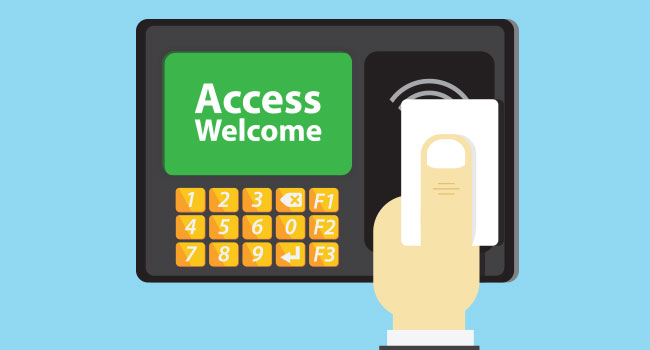
OSDP Benefits Forward-Thinking Campus Environments
OSDP provides a higher level of security, and continuously monitors wiring to guard against hackers.
- By Kim Rahfaldt
- May 30, 2018
The Security Industry Association (SIA) developed the Open Supervised Device Protocol (OSDP) access control communications standard to improve interoperability (or communications) among different access control systems and devices. SIA is constantly improving it, and is working to have it recognized by the American National Standards Institute (ANSI). As technologies continue to age and become vulnerable to hackers, it is important manufacturers adopt stricter standards. Many have done so or are developing OSDP compliant products.
Why OSDP?
Hackers can easily target card readers using a standard protocol, leaving businesses at risk. OSDP meets federal access control standards such as Public Key Infrastructure (PKI) for Federal Identity Credential and Access Management (FICAM), and supports AES-128 encryption. It provides a higher level of security, and continuously monitors wiring to guard against hackers.
SIA recommends adopting OSDP for access control installations in high security settings. The predefined encryption and authentication provides increased security, and OSDP supports smart card technology, providing end users with an easy path to upgrade from Wiegand.
What does this mean for campus end users?
OSDP delivers interoperability among security systems and devices, giving users increased flexibility with the products they select. As the industry adopts the OSDP standard, all access control panels will need to be upgraded or replaced to become compliant. Users can choose an access control system from one manufacturer and card readers from a different manufacturer and they will work together.
For campus environments, readers are continually being added as budget allows or security necessitates. When adding non-OSDP readers, more wires are needed to run between each panel and the reader, incurring expensive labor costs. And when it is time to upgrade the access control system, those readers will need to be replaced.
Choosing OSDP-enabled readers saves money. OSDP-enabled readers use existing wiring to communicate between the compliant panel and the reader, eliminating labor costs. When it is time to upgrade the access control system, the readers will work with the new system.
Future Proof Your Campus
AMAG Technology’s latest Wiegand version of its Symmetry Blue Bluetooth reader will have the ability to enable OSDP in the near future. The bluetooth reader comes in three form factors to satisfy any environment, indoor or outdoors, and provides an affordable transition path for end users. Wiegand, despite being insecure, remains the most widely used card technology. Plus, the readers also support smart card technology. Many organizations are making the investment to upgrade to the more secure technology.
As technology continues to evolve and the security industry catches up to the consumer / DIY market, security credentials will naturally transition to being stored on a mobile device. And while this technology is available NOW in the security market, organizations have been slower to adopt (like with all technologies). Universities and other campus environments where large populations of younger people use the system seem to be early adopters of mobile credentials.
Everyone carries a cell phone, yet people often forget their access cards. They easily get misplaced, borrowed by friends or lost. As universities, hospitals and other verticals in the commercial sector replace their card readers, choosing mobile enabled readers that support smart card technologies makes sense. OSDP-enabled Symmetry Blue readers will provide a future proof path for users to use Wiegand now, upgrade to smart card technology when ready and provide a mobile solution when comfortable. Companies can also use both smartcard technology and mobile technology at the same time.
Do your homework!
Some manufacturers charge a licensing fee, per user, when an end user is ready to upgrade to a mobile credential. This is cost prohibitive. Other manufacturers give the license away for free. Once you buy the reader, that is all you need to do. AMAG Technology’s Wiegand version of the Symmetry Blue bluetooth reader will soon be OSDP-enabled and provide an affordable transition path that ensures users are ready for the future.
About the Author
Kim Rahfaldt is Director of Media Relations at AMAG Technology, Inc., based in Torrance, Calif.